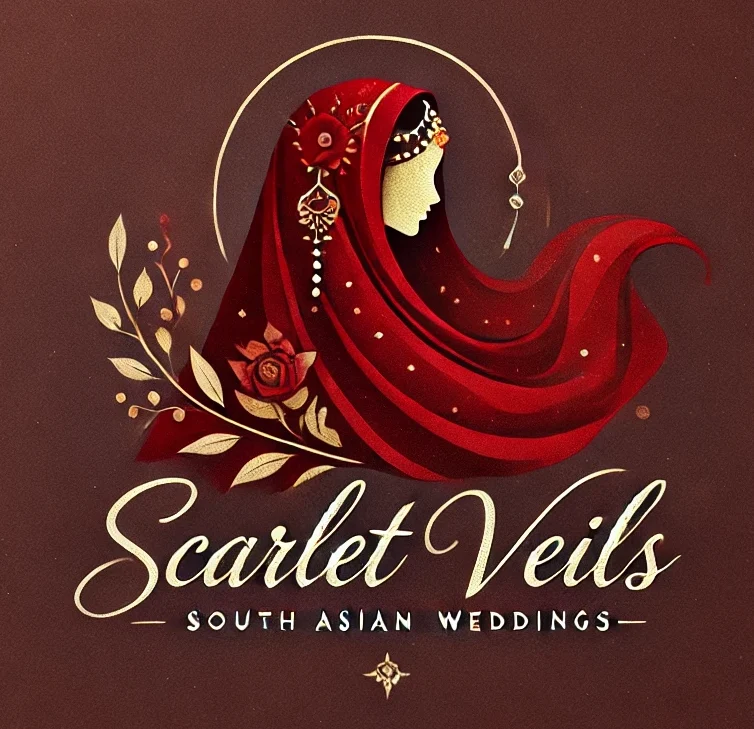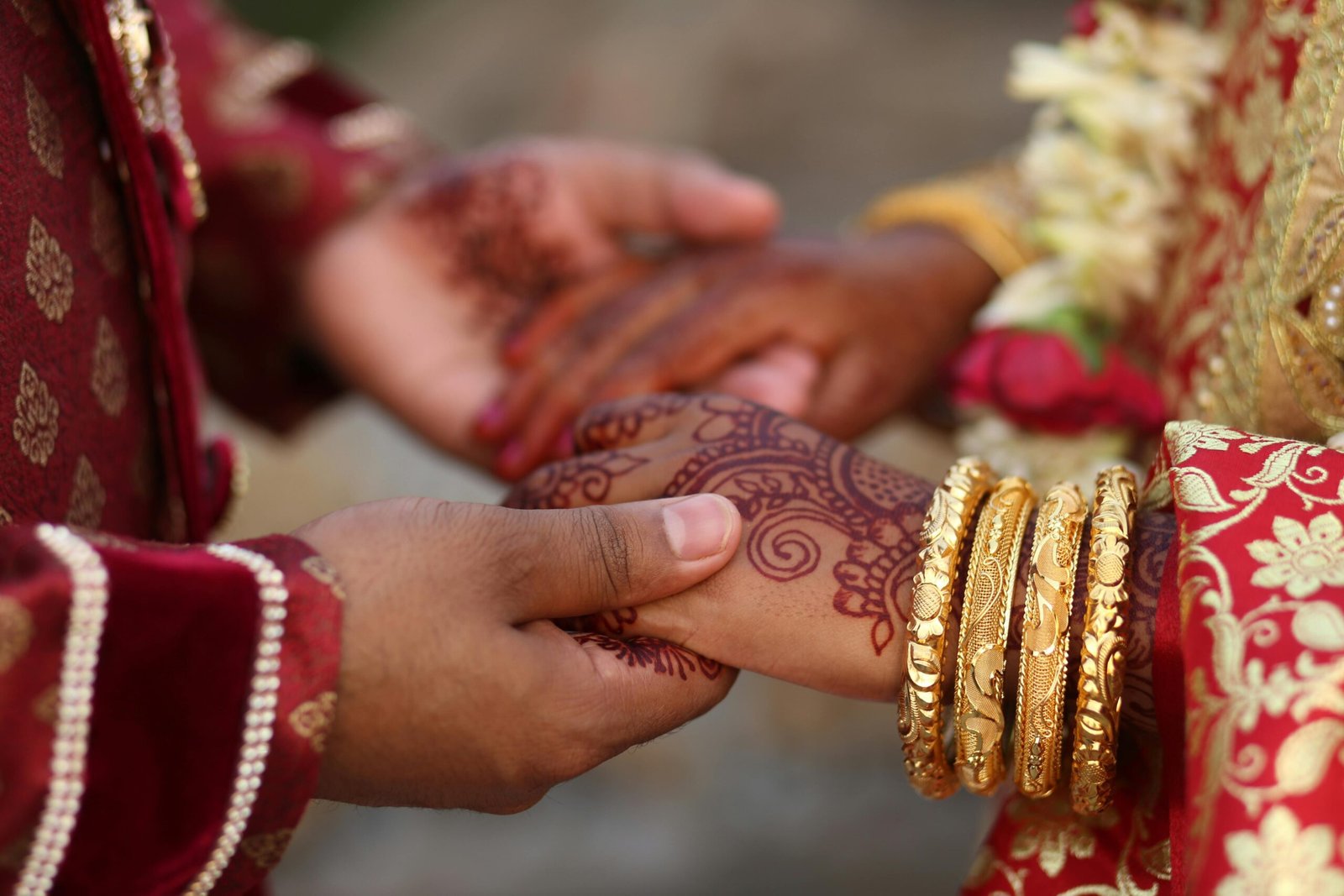Table of Contents
South Asian Muslim weddings are known for their vibrant colours, rich traditions, and deep-rooted connection to faith. They’re a celebration not just of the union between two people but of family, culture, and the blessings of Allah. Whether you’re attending your first South Asian wedding or you’re in the middle of planning your own, understanding the various rituals and customs can make the experience even more meaningful. In this guide, I’ll walk you through the key stages of a South Asian Muslim wedding, blending both tradition and modern practices. Let’s delve in and discover the uniqueness of these weddings together!
1. Pre-wedding traditions: The fun begins early.
Mangni (Engagement)
Before the wedding festivities kick off, there’s the Mangni—the engagement. This is the moment when the two families officially come together, and the couple exchanges rings. This event marks a formal promise of marriage between the couple. Think of it as a sweet prelude to the Nikah, the actual wedding ceremony.
While some Muslim couples integrate the ring exchange as part of the Nikah, others keep it a separate event. Though not part of Islamic tradition, this ceremony has become a common cultural practice in many families. It’s important to note that while the engagement and ring exchange are lovely traditions, they aren’t Islamic requirements but have gained popularity through cultural and Western influences.
Mehndi (Henna Ceremony)
Next comes one of the most exciting pre-wedding traditions— the Mehndi! You’ve probably seen photos of brides with stunning henna designs on their hands and feet. This ancient art form, filled with intricate floral patterns and shapes, is not only stunning but also deeply meaningful.
The Mehndi ceremony usually only takes place on the bride’s side, with the majority of the female family members and friends attending it, as it is impermissible for men to apply henna on their hands and feet due to religious guidelines against imitating females.
And, although traditionally the main element of Mehndi ceremonies is the application of henna, nowadays many brides opt to have their henna applied beforehand, then showcase the designs on the day of the ceremony. We believe that applying henna in advance is a wonderful idea! Not only will it help you enjoy the ceremony stress-free, but it also gives the colour time to deepen before the big day.
2. The Nikah: Where it all becomes official
In South Asian Muslim weddings, the nikah is the heart of the ceremony, bringing together faith and tradition in a beautiful way. This is the Islamic marriage contract and makes the union between a man and woman recognised by Allah. It’s a straightforward but deeply meaningful ceremony. What’s special about the Nikah is it’s simplicity—just two male witnesses or one male and two females, the couple’s consent, and a shared commitment in the eyes of Allah. Simple yet deeply heartfelt, the Nikah ceremony is filled with sincerity and meaning.
Here’s what happens during the Nikah:
- Khutbah (Sermon): Firstly, a short sermon is delivered, reminding the couple about their responsibilities to each other and to Allah. While not mandatory for the marriage’s validity, having a Nikah Khutbah is believed to bring more blessings to the marriage ceremony.
- Next is the Ijab and Qubul (Offer and Acceptance): One side must make the proposal (Ijab) stating the intent to marry, and the other side must accept it (Qubul) to formalise the marriage contract in the presence of witnesses.
- Today, it is common practice to have an Imam officiate the wedding ceremony as the representative of the bride and groom. In this case, the Imam, acting as the representative of the bride and groom, usually asks the couple if they agree to marry each other. When they agree, they typically respond with “Qabool Hai,” meaning “I accept.”
- Mahr: Mahr, often referred to as dowry, is a gift given by the groom to the bride—this can be in the form of money, jewellery, or anything agreed upon. Unlike traditional dowries, where payments go from the bride’s family to the groom, Mahr is an obligation on the groom, ordained by Allah. The bride has the divine right to receive an amount she deems fair without fear of shame.
“Give women you wed their due gifts graciously. But if they waive some of it willingly, then you may enjoy it freely with a clear conscience.” [Surah Nisa, verse 4]
As a bride, remember that it’s your divine right to ask for a Mahr amount you believe is fair. Feel confident in asserting yourself and advocating for what you deserve. Consider negotiating the Mahr amount before the wedding day to prevent potential issues in the future.
3. Post-wedding celebrations: Time to party!
Walima (the wedding feast)
After the Nikah, it’s time for the Walima—the big celebration hosted by the groom’s family. This is not just any party; it’s an important Islamic tradition (a strongly recommended Sunnah that some scholars consider wajib). The Walima marks the couple’s first public appearance as newlyweds, where an abundance of food, laughter, and a warm atmosphere await as everyone gathers to celebrate the union.
Although the Walima is a significant Islamic tradition, it’s essential to remember the value of simplicity in Islam, even as cultural influences have led to more elaborate celebrations over the years.
Rukhsati (Farewell)
The Rukhsati is often a bittersweet moment, filled with a mix of laughter, tears, and heartfelt goodbyes. It’s a time of emotional transitions and new beginnings. The bride, now a wife, leaves the warmth of her childhood home to begin a new chapter. Imagine the mix of emotions—leaving behind your childhood home but stepping into an exciting new life with your partner! Isn’t it a remarkable journey? This serves as a poignant reminder that weddings go beyond the union of two individuals; they embody the unity of families and the cherished bonds they hold.
4. Customs and traditions that may not align with Islamic teachings
Superstition in Post-Wedding Rituals (Manjha, Gaye Holud, Haldi, Bodumas Beynun)
The application of turmeric paste to the bride and groom is a popular pre-wedding ritual in countries like India, Pakistan, and Bangladesh. While the act itself is harmless, it may sometimes carry superstitious beliefs about bringing good fortune or protecting against evil. Islam strongly discourages superstition and encourages reliance on Allah for blessings and protection.
In the Maldives, the Bodumas Beynun fishing ritual is performed to bring good fortune to the newlywed couple. Islam teaches that all provision and blessings come from Allah, and practices based on superstitious beliefs or rituals could contradict this fundamental Islamic principle.
Symbolic Rituals (Poruwa Ceremony, Anointing of the Thali)
In Sri Lanka and India, certain wedding rituals, such as the Poruwa ceremony or the tying of the Thali necklace, carry symbolic meanings that stem from non-Islamic religious practices. While these may be part of cultural traditions, it’s important to ensure that they do not conflict with Islamic beliefs, especially when it comes to introducing religious symbolism from other faiths.
Summary
To wrap things up, South Asian Muslim weddings are such a wonderful mix of faith, culture, and vibrant traditions. From the intimate moments of the Mangni and Mehndi to the sacred beauty of the Nikah and the joyful festivities of the Walima, these weddings overflow with love, family, and the blessings of Allah. Whether you’re the bride, groom, or guest, knowing the meaning behind each ceremony makes it that much more special, turning it into a memory you’ll hold onto forever.
To all the brides-to-be, cherish this day as a celebration of you. While traditions are beautiful, your wedding should reflect your personality and religious values. Feel free to embrace the customs you love while keeping things simple and meaningful, just as Islam encourages. And for everyone attending, enjoy every second! These celebrations are filled with love, laughter, and the joy of two families coming together.
South Asian Muslim weddings are always evolving, blending old traditions with new touches. But at their core, they’ll always be about one thing: the beautiful union of two souls under the love and care of family, faith, and culture.



